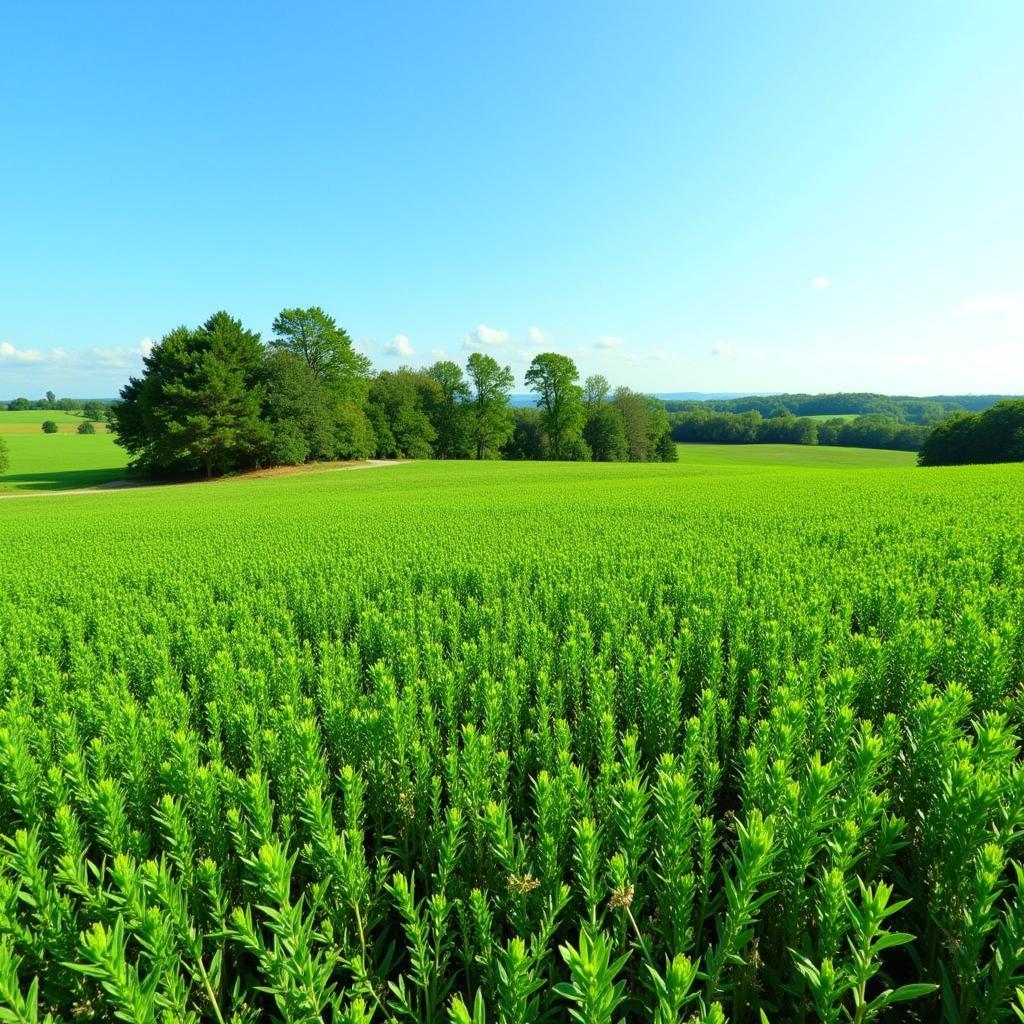Deer Vetch Food Plots are becoming increasingly popular among hunters looking to attract and hold deer on their property. This versatile legume offers a high-protein forage option that deer find incredibly palatable, especially during the critical fall and winter months. Choosing deer vetch for your food plot is a smart move for boosting your hunting success.
Why Choose Deer Vetch for Your Food Plot?
Deer vetch (Vicia villosa) offers several advantages as a food plot option. Its high protein content makes it an excellent choice for supporting antler growth and overall deer health. It’s also relatively easy to establish and can tolerate a range of soil conditions, making it a great choice for beginners. Furthermore, deer vetch is a nitrogen-fixing legume, meaning it improves soil health by adding nitrogen, a crucial nutrient for plant growth. This translates to better long-term food plot success and reduced need for fertilizers.
Planting and Maintaining Your Deer Vetch Food Plot
Successfully establishing a deer vetch food plot requires proper planning and execution. First, soil testing is essential to determine pH and nutrient levels. Deer vetch thrives in well-drained soil with a pH between 6.0 and 7.0. Next, prepare the seedbed by removing existing vegetation and tilling the soil to a depth of 4-6 inches. Seeding rates typically range from 25-30 lbs per acre. Planting depth should be around ½ inch. The ideal planting time for deer vetch is in the fall, allowing it to establish a strong root system before winter.
Timing Your Deer Vetch Planting
Timing is crucial for maximizing the effectiveness of your deer vetch food plot. Planting in early fall, ideally 6-8 weeks before the first frost, allows the vetch to establish itself before winter dormancy. This early growth provides valuable forage for deer during the hunting season.
Maximizing Your Deer Vetch Food Plot’s Potential
While deer vetch is relatively low-maintenance, there are steps you can take to maximize its potential. Consider adding a companion crop, such as oats or winter rye, to provide additional forage and help suppress weeds. Regular mowing can also help promote bushier growth and increase forage production. Finally, monitor your food plot for pest and disease issues and address them promptly to ensure a healthy and productive stand.
Deer Vetch and Companion Planting
Planting a companion crop alongside your deer vetch can offer several benefits. Oats and winter rye are popular choices, as they provide additional forage during the early stages of growth and help protect the vetch seedlings from harsh weather conditions. They also act as a natural weed suppressant, reducing competition for resources.
“Using a companion crop like oats with your deer vetch is a game-changer,” says John Smith, a wildlife biologist with over 20 years of experience. “It provides immediate forage while the vetch establishes and creates a more resilient and productive food plot overall.”
 A healthy, flourishing deer vetch field
A healthy, flourishing deer vetch field
Conclusion
Deer vetch offers hunters an excellent option for creating a high-quality food plot that attracts and sustains deer throughout the year, particularly during the crucial hunting season. By understanding the planting, maintenance, and potential of deer vetch, you can maximize your hunting success while also improving the health of your land.
FAQ
- When is the best time to plant deer vetch? (Early fall, 6-8 weeks before the first frost)
- What is the ideal soil pH for deer vetch? (6.0-7.0)
- What are the benefits of using a companion crop with deer vetch? (Provides additional forage, weed suppression, and protection from harsh weather)
- How much deer vetch seed should I plant per acre? (25-30 lbs)
- How deep should I plant deer vetch seeds? (½ inch)
- Is deer vetch a good choice for beginners? (Yes, it is relatively easy to establish and maintain)
- How does deer vetch benefit the soil? (It fixes nitrogen, improving soil fertility)
Common Scenarios and Questions
- Scenario: Deer aren’t using my vetch plot. Possible solutions: Check plot location, ensure adequate cover nearby, consider adding a mineral lick.
- Question: Can I plant deer vetch in the spring? Answer: Yes, but fall planting is generally preferred for better establishment.
Further Reading
For more information on food plots and wildlife management, visit our articles on attracting deer and creating successful food plots.
Contact us at Phone Number: 02437655121, Email: minacones@gmail.com or visit us at 3PGH+8R9, ĐT70A, thôn Trung, Bắc Từ Liêm, Hà Nội, Việt Nam. We have a 24/7 customer service team.